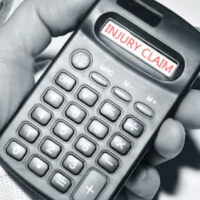Can You Use Circumstantial Evidence to Prove Your Personal Injury Case?

A personal injury case can be a strenuous experience for the plaintiff. The success or failure of a personal injury case rests heavily on the strength of the evidence presented in court. In personal injury lawsuits, two types of evidence exist: circumstantial evidence and direct evidence. Direct evidence is straightforward and uncomplicated, whereas circumstantial evidence requires the jury to draw inferences to establish a plaintiff’s case.
If you have been injured because of someone else’s negligence and filed a personal injury claim, you need strong evidence to prove your case. Our Fulton County personal injury lawyers at Hawkins Spizman Trial Lawyers assist injured victims at all stages of the claims process, including gathering evidence. Get help from our lawyers to fight for the compensation you deserve.
What Is Circumstantial Evidence?
Circumstantial evidence is indirect evidence that infers the occurrence of an event based on circumstances surrounding it, according to the Legal Information Institute. It is proof that relies on the inference of a fact based on demonstrating its relationship with an established fact. In other words, it is a collection of facts that viewers need to connect to reach a conclusion.
Examples of Circumstantial Evidence
There are several examples of circumstantial evidence in personal injury cases:
- Footprints near the place where an accident took place
- Tire marks on the ground after a car accident
- The victim’s emotional state immediately before or after the accident
Circumstantial evidence is usually used in cases where there is no clear-cut evidence. In some cases, circumstantial evidence may be the only available proof. Therefore, the circumstantial evidence allows us to prove the linking of a fact that was impossible to prove directly.
Other Types of Evidence in Personal Injury Cases
In addition to circumstantial evidence, you can use other evidence types to prove your personal injury case. Direct evidence is the most reliable form of evidence that can prove a personal injury case with little room for doubt. Direct evidence includes written evidence, eyewitness testimonies, and video footage of the accident.
Furthermore, medical evidence in the form of medical bills, medical reports, and medical professionals’ testimony is also critical and helpful to prove personal injury cases. Financial evidence in the form of lost wages, insurance claims, hospital bills, and repair costs is also essential.
Can You Use Circumstantial Evidence to Prove Your Personal Injury Case?
Yes, circumstantial evidence can be used to prove personal injury cases if it is logical and ties up all loose ends. The use of circumstantial evidence is often helpful in cases where there are no eyewitnesses or direct evidence, such as in slip-and-fall accidents or workplace accidents that are not captured on surveillance cameras.
Is Circumstantial Evidence Enough to Prove Your Personal Injury Case?
The question is, is circumstantial evidence enough to win a case? Well, it relies on individual situations. While circumstantial evidence can be compelling, it is often not straightforward and can be open to interpretation. Juries can interpret the evidence in various ways, which can significantly impact the case’s outcome. Therefore, although circumstantial evidence will, in some ways, aid in establishing a case, it may not be sufficient in most cases.
Let Us Help You Prove Your Personal Injury Case
Personal injury claims are primarily determined based on the evidence provided. circumstantial evidence is not bulletproof, it may still aid plaintiffs in proving liability and obtaining compensation that they are entitled to. Speak with our lawyers at Hawkins Spizman Trial Lawyers to determine the applicable evidence types and present them in the most persuasive way possible.
We represent clients in personal injury cases throughout the state of Georgia, including Fulton County, Cobb County, Gwinnett County, Atlanta, Dunwoody, Sandy Springs, Alpharetta, and Johns Creek. Reach out to our office to schedule a free case evaluation. Call 770-685-6400 today.
